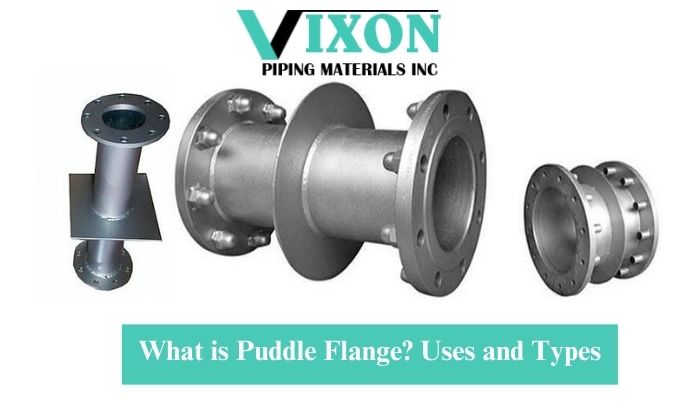In the construction and plumbing industries, certain components are critical to ensuring the longevity and safety of structures. One such component is the puddle flange, a vital element that helps prevent water from leaking through walls, floors, and other surfaces where pipes pass through. Understanding what a puddle flange is, its uses, types, and the standards governing its manufacture can aid in making informed decisions during construction and repair projects.
What is a Puddle Flange?
A puddle flange is a circular, flat disk-like device installed around a pipe to create a watertight seal where the pipe passes through a structure, such as a wall or a floor. The primary purpose of a puddle flange is to prevent water from seeping through the gap between the pipe and the surrounding structure, thus maintaining the integrity of the building and preventing water damage. Puddle flanges are typically made from durable materials like stainless steel, PVC, or rubber, which can withstand the harsh conditions often found in plumbing and construction environments.
Uses of Puddle Flanges
Puddle flanges are commonly used in a variety of construction and plumbing applications. Their main use is to ensure that pipes passing through walls, floors, or ceilings remain sealed against water ingress. This is particularly important in environments where water is constantly present, such as basements, swimming pools, water tanks, and underground structures.
For example, in a building’s basement, pipes carrying water, sewage, or other fluids often pass through the concrete floor. Without a proper seal, water could easily seep through the gap between the pipe and the concrete, leading to leaks and potential water damage. A puddle flange installed around the pipe during construction ensures that these areas remain watertight.
Types of Puddle Flanges
There are several types of puddle flanges available, each designed for specific applications and materials:
Stainless Steel Puddle Flange:
Stainless steel puddle flanges are highly durable and resistant to corrosion, making them ideal for use in harsh environments or where the water is particularly corrosive. They are commonly used in industrial settings, water treatment plants, and areas with high exposure to chemicals.
PVC Puddle Flange:
PVC (polyvinyl chloride) puddle flanges are lightweight and easy to install, making them a popular choice for residential and commercial plumbing applications. They are suitable for use with plastic pipes and are often used in less demanding environments where durability is still important but where the risk of corrosion is lower.
Rubber Puddle Flange:
Rubber puddle flanges are flexible and provide a tight seal, making them ideal for situations where slight movement of the pipe is expected. They are commonly used in underground installations, such as in water tanks or pipelines, where soil movement can occur.
Puddle Flange Standards
To ensure that Puddle Flanges perform their intended function effectively, they must meet specific industry standards. These standards govern the materials used, the manufacturing process, and the dimensions of the flanges to ensure they are suitable for various applications. Some of the key standards include:
BS 4504:
The British Standard BS 4504 covers the specifications for flanges and their dimensions. Puddle flanges manufactured to this standard are designed to fit seamlessly with other pipe fittings and ensure a secure, watertight connection.
DIN 1988:
The German Institute for Standardization (DIN) specifies guidelines for drinking water installations, including the use of puddle flanges. This standard ensures that the flanges are safe for use in potable water systems and meet strict hygiene requirements.
ASTM A182:
The ASTM A182 standard from the American Society for Testing and Materials specifies the requirements for forged stainless steel pipe flanges. Puddle flanges made to this standard are recognized for their durability and resistance to corrosion, making them suitable for use in harsh environments.
EN 1092-1:
This European Standard specifies the requirements for steel flanges, including puddle flanges, ensuring they are manufactured to precise dimensions and are compatible with other fittings in the European market.
Conclusion
Puddle flanges are essential components in construction and plumbing, providing a reliable solution to prevent water from leaking through areas where pipes pass through walls, floors, and other surfaces. By creating a watertight seal, puddle flanges help maintain the integrity of structures and protect against water damage. Whether made from stainless steel, PVC, or rubber, puddle flanges are available in various types to suit different applications and materials. Additionally, adherence to industry standards such as BS 4504, DIN 1988, ASTM A182, and EN 1092-1 ensures that these flanges are manufactured to the highest quality, providing reliable performance in any construction project.

